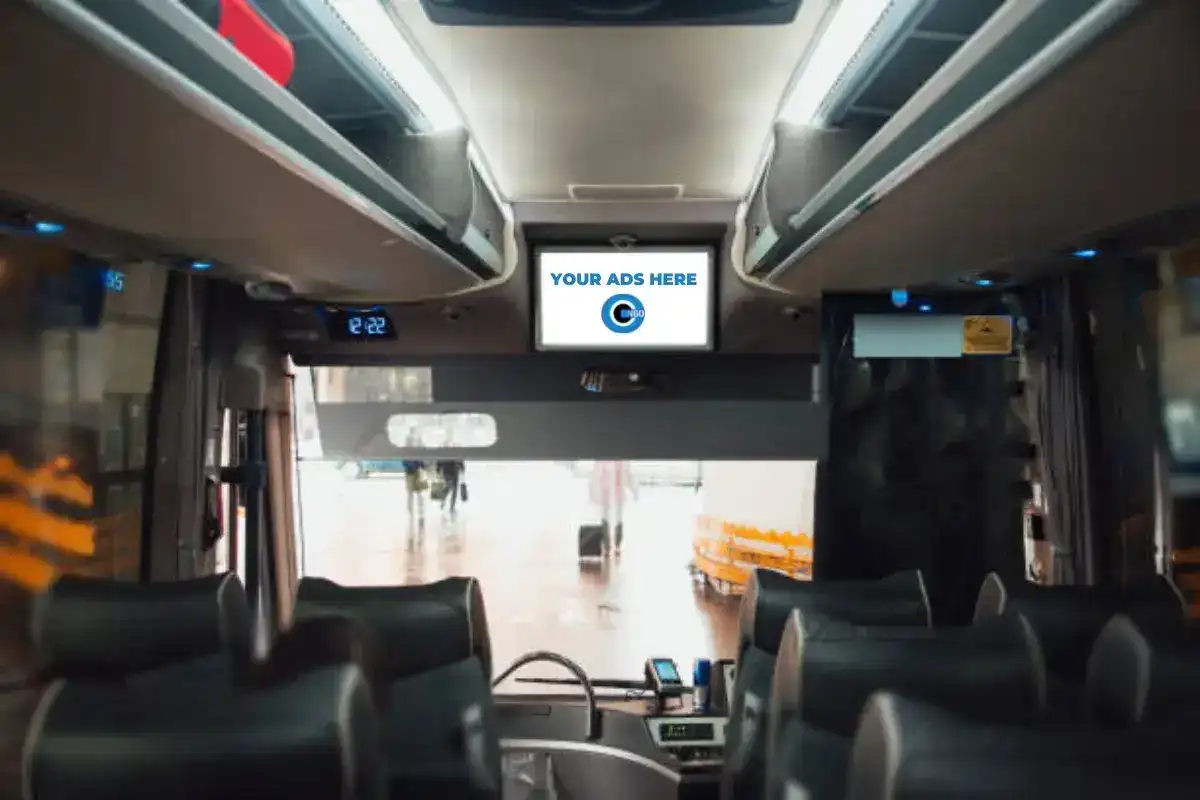Transit Advertising Philippines for Unmatched Brand Name Presence
Transit Advertising Philippines for Unmatched Brand Name Presence
Blog Article
Understanding the Function of Transit Marketing in Enhancing Brand Presence and Customer Interaction
Transportation advertising has actually become a critical element in the advertising and marketing landscape, supplying one-of-a-kind possibilities for brand names to raise their exposure and engage consumers efficiently. With the capacity to get to a captive and varied target market during their day-to-day commutes, these advertising and marketing methods are not merely concerning presence; they have to do with producing meaningful links with prospective clients. As we discover the diverse benefits and innovative techniques within transit advertising, it ends up being vital to think about how these elements jointly affect consumer understanding and behavior, raising questions regarding their long-lasting effect on brand commitment.
Definition of Transportation Marketing
Transportation advertising and marketing describes the technique of advertising products, solutions, or brands via promotions placed around mass transit systems. This kind of advertising encompasses a selection of positionings, including posters on buses and trains, digital displays at transit stations, and covers on the exterior of lorries. It intends to reach a varied target market, profiting from the high foot website traffic related to public transportation.
Transit advertising and marketing is strategically placed to capture the interest of travelers, that usually spend substantial time traveling or waiting. By integrating advertisements right into the daily routines of people, brands can develop a long-term perception and foster brand name acknowledgment. The tool is specifically effective in city settings, where mass transit is a key setting of travel.
Additionally, transit marketing can assist in local targeting, permitting organizations to reach specific demographics based upon transit paths and station areas. As city populaces grow and using public transport rises, this advertising technique has actually gained prominence as an essential part of integrated advertising approaches. The dynamic nature of transportation advertising and marketing, combined with its capacity to involve consumers in a captive atmosphere, highlights its value in contemporary advertising methods.
Advantages of Transit Marketing
The performance of transportation advertising lies in its capacity to deliver a multitude of advantages to brand names looking for to boost visibility and involvement. Among the key benefits is the comprehensive reach it provides; transit ads can effectively target varied demographics across urban locations, getting to both commuters and pedestrians alike. This wide direct exposure significantly boosts brand awareness.
One more benefit is the high regularity of perceptions. As transit lorries travel along well established paths and quit at numerous places, they create repeated direct exposure that reinforces brand name messages. This frequency fosters familiarity, which is important in consumer decision-making.
Transportation marketing is additionally cost-effective contrasted to various other media systems. Given its expansive reach and potential for high impressions, brand names usually experience a reduced cost per thousand perceptions (CPM), maximizing their marketing spending plan.
Moreover, transportation ads can create a sense of area link. By lining up with local transit systems, brands can resonate with local audiences and cultivate a sense of neighborhood pride. This local method improves brand name commitment and interaction, making transit advertising a compelling option for organizations intending to solidify their visibility in the marketplace.

Reliable Approaches for Transportation Campaigns
To maximize the impact of transportation projects, brands should utilize calculated planning and execution customized to their target audience. First, determining the market characteristics of the audience using public transportation is crucial. This enables brands to create personalized messaging that resonates with possible customers.
Next, picking the appropriate transportation tools is important. Whether using bus covers, train posters, or electronic screens, each tool has one-of-a-kind benefits that can improve visibility. For example, vivid visuals on bus covers can stand out, while electronic advertisements can be upgraded frequently to mirror prompt promos.
Moreover, incorporating a cohesive look at here branding approach across transit systems ensures consistency and strengthens the brand's identification. Making use of memorable taglines and appealing designs will strengthen brand name recall amongst travelers.
By using these methods, brand names can properly harness the potential of transit marketing, promoting higher understanding and link with their target audience. Eventually, a well-executed transit campaign can drive considerable development in brand name visibility and consumer involvement.

Measuring Effect and Involvement
In reviewing the effectiveness of transit marketing campaign, precise measurement of impact and engagement is important for brands looking for to maximize their marketing strategies. Metrics such as reach, regularity, and impacts give foundational data to assess visibility. Evaluating these elements aids determine the number of possible consumers are exposed to the promotions throughout their everyday commutes.
Involvement can be further determined through customer interactions, such as web site web traffic, social networks discusses, and straight reactions to calls-to-action featured in the advertisements. Making use of devices like QR codes or one-of-a-kind URLs can promote monitoring of customer behavior straight linked to transportation projects. Studies and feedback mechanisms also offer as important approaches to collect qualitative information on customer assumptions and recall of the advertisement.
In addition, progressed analytics and acknowledgment versions can correlate transportation direct exposure with succeeding getting behavior, supplying insights right into the return on investment. By employing an extensive technique that incorporates measurable and qualitative measures, brand names can establish a nuanced understanding of their transportation marketing effect. Ultimately, this data-driven method enables brand names to refine their campaigns, ensuring they resonate efficiently with target audiences and enhance total brand exposure.
Situation Research Studies of Effective Projects
Successful transit marketing campaign function as compelling instances of how effective methods can boost brand name exposure and engagement. Transit Advertising Philippines. One remarkable case is the "I Love New york city" project, which changed the city's image and brought in countless tourists. By utilizing train ads, signboards, and bus wraps, the project created a solid, natural brand name my response identification, causing a substantial uptick in tourism and neighborhood service patronage
An additional excellent project is Coca-Cola's "Share a Coke" campaign, which leveraged transit advertising and marketing to individualize the brand experience. By including prominent names on advertising products across various transit platforms, Coca-Cola cultivated a deeper emotional connection with customers, motivating them to share their experiences on social media.
In addition, the "Got Milk?" campaign efficiently utilized public transport advertisements to get to a wide target market, reinforcing the message of the value of milk in a well balanced diet. The project saw a measurable boost in milk usage in target demographics.
These study highlight that when executed thoughtfully, transportation advertising and marketing can dramatically improve brand presence, foster customer explanation engagement, and drive quantifiable results, showing its crucial function in modern-day advertising and marketing techniques. - Transit Advertising Philippines
Final Thought
In conclusion, transit advertising functions as an important tool for enhancing brand name exposure and cultivating consumer involvement. By using purposefully placed promotions within mass transit systems, brand names can effectively reinforce and reach diverse audiences recognition with constant direct exposure. The application of targeted messaging and cutting-edge strategies additionally enhances the influence of transit projects. Inevitably, the ability to determine engagement and examine successful instance researches highlights the performance of transportation advertising in driving brand name commitment and consumer communications.
Transportation marketing has emerged as a pivotal element in the advertising and marketing landscape, using distinct chances for brands to raise their visibility and involve consumers efficiently.Additionally, transit advertising can assist in local targeting, enabling services to reach details demographics based on transit paths and station areas.In assessing the efficiency of transportation marketing projects, precise measurement of influence and interaction is important for brand names seeking to optimize their advertising and marketing techniques.Successful transit advertising and marketing projects serve as engaging instances of how effective approaches can elevate brand name exposure and interaction.In conclusion, transportation advertising offers as a crucial device for improving brand presence and promoting consumer interaction.
Report this page